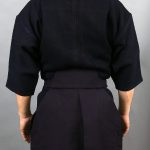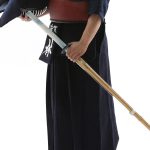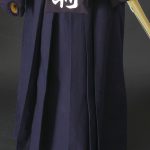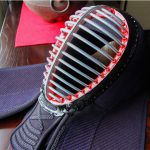
“Commando style”. A once common word in kendo parlance is now fast becoming obsolete. In fact, I imagine that younger kendo aficionados have no idea what it means. Maybe the Japanese equivalent will shed more light on its meaning: “No-pan”. That’s right, “no pants”. In other words, what you DON’T wear under your hakama. (I don’t know about girls because that’s not the kind of thing we talk about in the dojo.)
Ever since I started kendo three decades ago, it was almost inconceivable that anybody would don underwear under that magnificent split skirt. Yup, there is nothing better than having a draft of air puffing up your legs directly onto your nether regions to keep you cool in the horrendous Japanese heat. True, winter is a different story, but commando boys are tough. They have balls. Anybody whose boxers were visible through the sides of the hakama was obviously not aware of the true spirit of budo. Sheesh. Commando is a matter of pride.
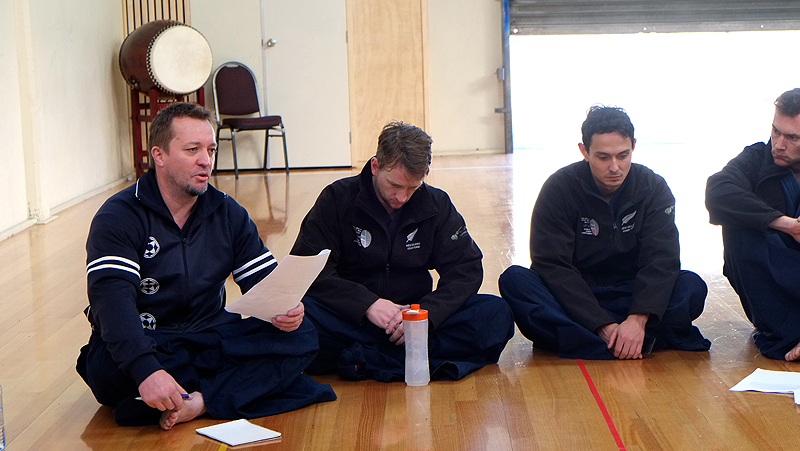
In any case, if you have been to a local dojo to train in Japan, you would have inadvertently spotted countless “manberries” peeking out the back slit of the kendo-gi in the changing room as hakama are stripped off and laid on the floor to fold. It’s not that you want to! They are just there, always, because kendo dudes have an attachment to the liberation of dangly bits through an age-old adherence to the fashion of “commando”.
But, the times are changing. An “evolution” in modesty was catalysed by the sudden increase of women taking up the art from the 1960s. Now, women make up a fair percentage of any dojo membership. As such, although testosterone still flows freely in the standard kendo smash fest, there are limitations on the amount of manly liberties deemed acceptable in the dojo.
I first became aware of this phenomenon when one of my kendo teachers, the late Murayama Keisuke-sensei, confessed that he wore “fundoshi” under his hakama. Basically, a fundoshi is a strip of cotton, like a tenugui, that is tied around the waist and secures the undercarriage. “My God”, I thought, “has the world gone crazy?” “Is the hakama going to become something akin to the Scottish kilt where everybody takes pleasure in guessing what is going on underneath?”
I’ve got nothing to be embarrassed about. If all and sundry spies my privates in a fleeting moment of kendo madness, that’s a small price to pay for emancipation. Commando, and proud of it. No guessing what’s up my kilt! Jingle bells, jingle bells, jingle all the way…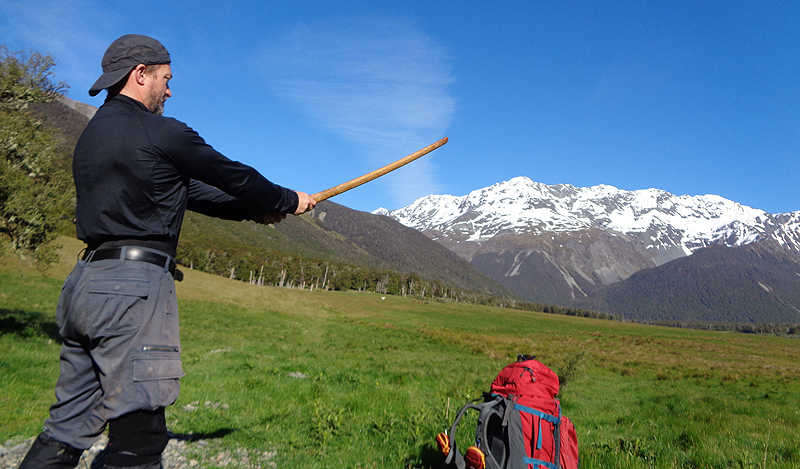
The logic was, however, quite respectable now that I think about it. He said that, “As one never knows when one might pass out, or even die on the throes of training, it’s behoves a man to save himself the embarrassment of an unseemly exposure of twigs and berries. If it was just other dudes in the dojo, it wouldn’t matter; but with the number of women training now, a modicum of decency is called for…” I supposed that, as there is no retirement in kendo, and you just keep going until you are too old to pick up a shinai, meeting such a fate in the dojo is probably a secret desire harboured by many an old kendo nut.
But, nobody wants the grand finale of their life—the crowning moment of one’s kendo career shuffling off your mortal coil with that last perfect “do-and-die” men strike—ruined by an indecorous flash of albondigas and garnishing up the hakama leg while lying unceremoniously splayed out on the floor.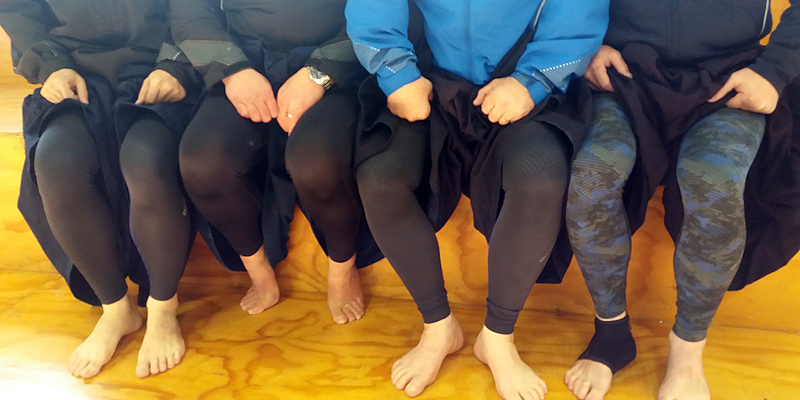 From fears of indecent exposure, taking the batten in the kendo underworld now are high-tech sports garments. They serve a dual purpose: family jewels in suspended animation hidden from view and enhanced performance. No more fundoshi to cover an old man’s walnuts anymore; spandex is the name of the game in the twenty-first century.
From fears of indecent exposure, taking the batten in the kendo underworld now are high-tech sports garments. They serve a dual purpose: family jewels in suspended animation hidden from view and enhanced performance. No more fundoshi to cover an old man’s walnuts anymore; spandex is the name of the game in the twenty-first century.
I am, of course, referring to compression garments that are gracefully painted on by athletes in sports ranging from speedskating to beach volleyball. And here, I must confess to a conversion of sorts. What’s up my kilt now? I have embraced the compression garments as strongly and tightly as they embrace me.
But, do they really work in terms of making my kendo better? More and more, shelves in sportswear shops are adorned with the latest lines of compression pants and shirts. The athlete consumer loves them, because they’re comfortable, warm in winter and cool in summer, and hold your bits and bobs together to withstand the rigours of your chosen sport. One small study of compression pants concluded that, when tested by short distance sprinters there was no change in sprint time.
Nevertheless, they did find that the pants corrected the athletes’ gait which in turn would reduce the potential for injury. Good enough for me. Still, many other papers looking at the benefits of compression garments found no evidence that they improve performance anything beyond the placebo effect. Placebo? Hey, whatever works! A lot of kendo is in the mind anyway.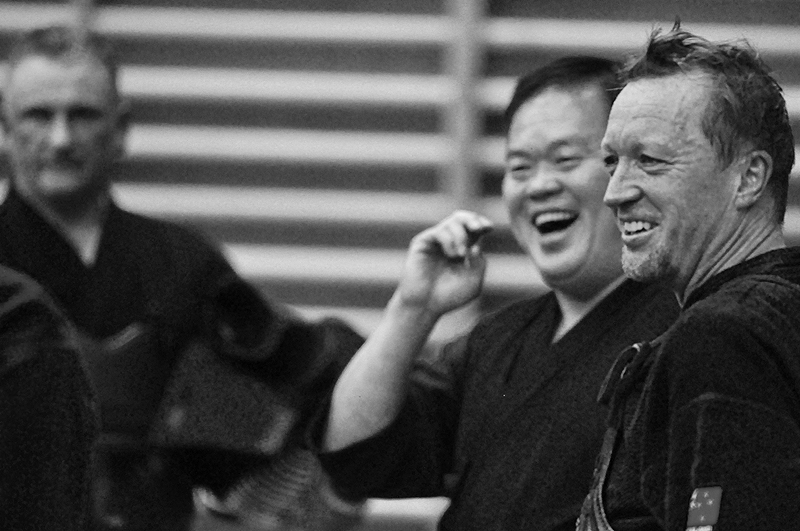 The following casual observations from wearing compression pants under my hakama have made it my go to under armour:
The following casual observations from wearing compression pants under my hakama have made it my go to under armour:
- They keep my muscles warm, and this surely helps to prevent strains. I have been a chronic sufferer of torn calf muscles in the past. I now wear compression pants in place of the usual array of supporters and tape that I used strapped to my leg before training. Saves time.
- Especially in summer they seem to wick away the constant flow of sweat from my body, and prevent chafing. This also seems to keep me comparatively cool even in those saunas mistakenly referred to as dojos.
- I’m convinced that they relieve muscle stiffness and soreness after training, and make recovery so much faster. Some research suggests that they decrease the heart rate and accumulation of lactic acid, which is why they are thought to be helpful in the post-workout muscle repair stage.
- My legs look longer than they actually are.
- Stops your legs turning blue when you have a new hakama. (And keeps the inside of your hakama clean, too…)
- And, I look like a superhero when I strip off in the changing room. (Or, a pro-wrestler depending on your point of view.)

Written by Alex Bennett(Kendo Kyoshi 7-dan)




